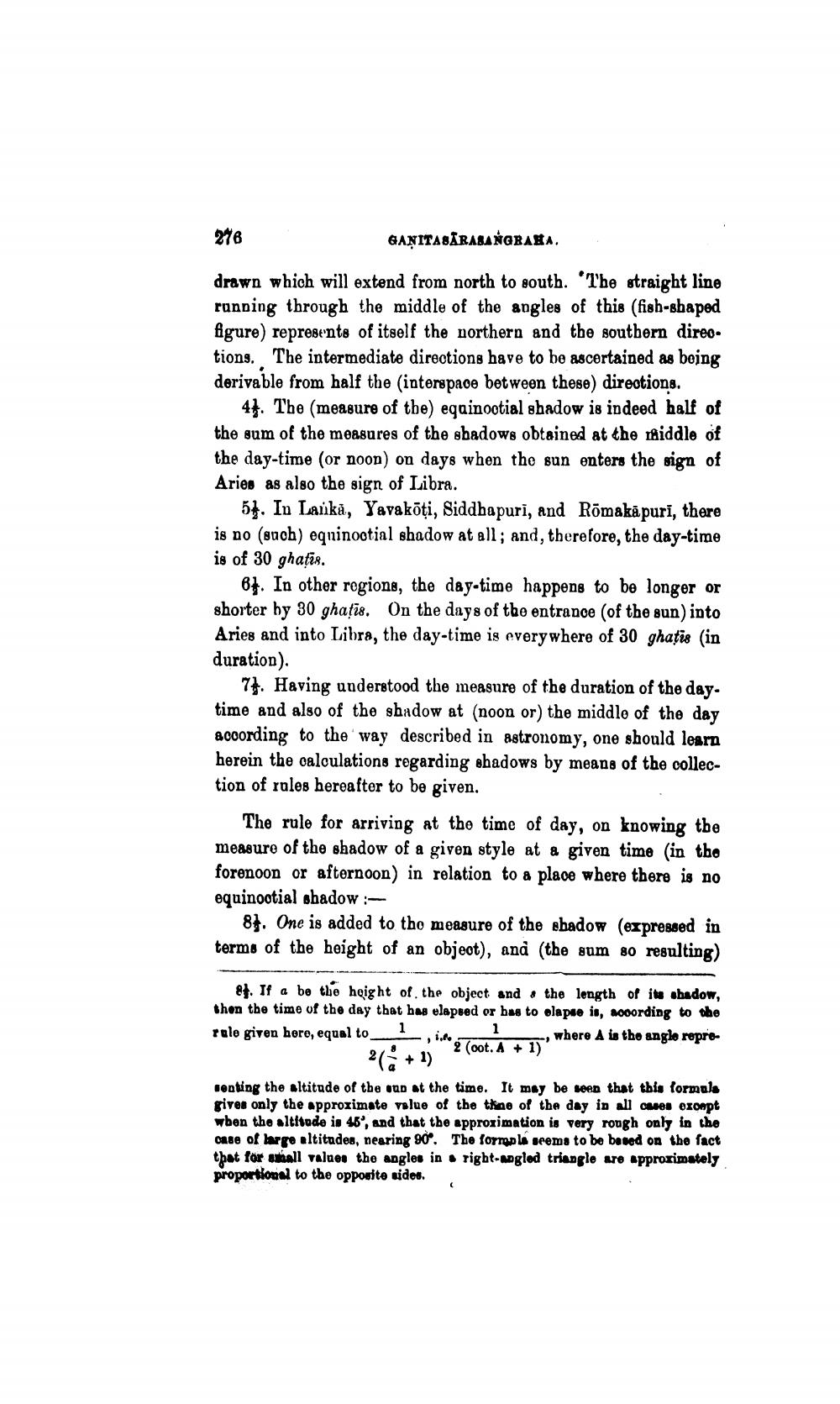________________
276
GAŅITASARASANGBAKA.
drawn which will extend from north to south. The straight line running through the middle of the angles of this (fish-shaped figure) represents of itself the northern and the southern direo. tions. The intermediate directions have to be ascertained as being derivable from half the (interspace between these) direotions.
41. The (measure of the) equinoctial shadow is indeed half of the sum of the measures of the shadows obtained at the middle of the day-time (or noon) on days when the sun enters the sign of Aries as also the sign of Libra.
54. In Lalka, Yavakoti, Siddhapuri, and Romakāpuri, there is no (such) eqninootial shadow at all; and, therefore, the day-time is of 30 ghatīs.
04. In other regions, the day-time happens to be longer or shorter hy 30 ghaťīs. On the days of the entrance (of the sun) into Aries and into Libra, the day-time is everywhere of 30 ghatīs (in duration)
74. Having understood the measure of the duration of the day. time and also of the shadow at (noon or) the middle of the day according to the way described in astronomy, one should learn herein the calculations regarding shadows by means of the collection of rules hereafter to be given.
The rule for arriving at the time of day, on knowing the measure of the shadow of a given style at & given time in the forenoon or afternoon) in relation to a place where there is no equinootial shadow :
81. One is added to the measure of the shadow (expressed in terms of the height of an objeot), and the sum 80 resulting)
8. If a be the height of the object and the length of its shadow, then the time of the day that has elapsed or has to olapse is, according to the rule given hero, equal to 1 ,6- 1 , where A is the angle repro
26+1)
2 (oot. A + 1)'
senting the altitude of the sup at the time. It may be seen that this formula rives only the approximate value of the time of the day in all cores erompt when the altitude in 46', and that the approximation is very rough only in the ouse of largo altitudes, nearing 90°. The forman la seems to be based on the fact that for a ball values the angles in right-Apgled triangle are approximately proportional to the opposite sides.




